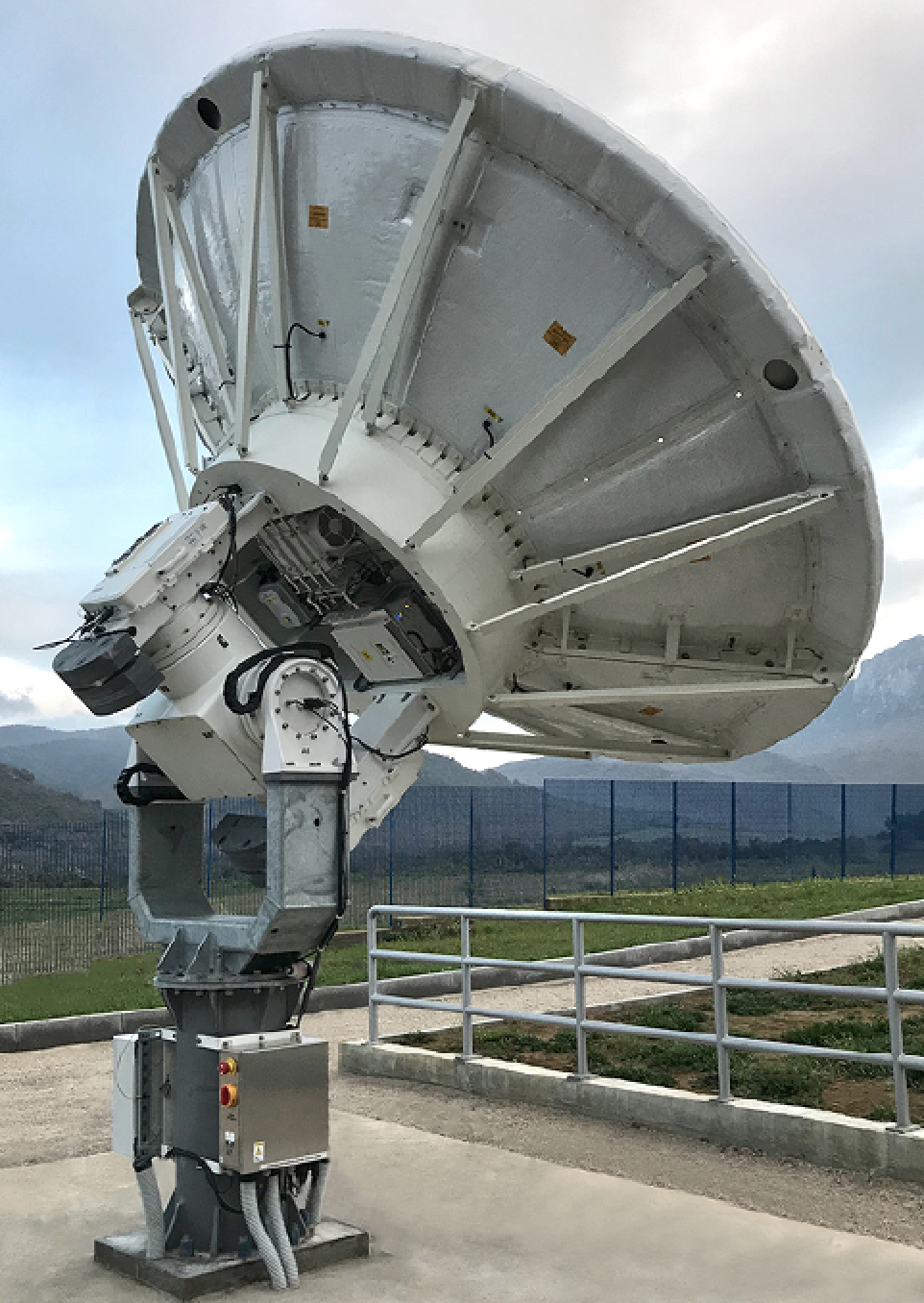Full motion antennas remain steadfast + reliable workhorses for NGSO support on the ground
Continued growth in communications around the globe has accelerated the ever-increasing demand for faster and more accessible connectivity. There are over 7,000 satellites currently on orbit with over 100,000 expected to be launched into space by 2030. Many of these satellites will be in Non-Geostationary Orbit (NGSO) that include LEO/MEO (low earth and medium earth orbit satellites). This continued growth in space has led to increased construction of flexible, scalable, and innovative gateways on Earth.

Full-motion 3.5m Ka-band gateway with XY pedestal supports
NGSO orbits. Photo is courtesy of Kratos.
NGSO Satellites — The Key To Multi-Orbit Roadmaps
The advantages of using NGSO satellites for Internet and critical security applications are clear. They are fast and provide strong signal strength, low latency, reduced power usage and the cost to launch is also low. At the same time, NGSO satellite technologies have some unique challenges. Because they are closer to earth and are in motion at constant, considerable speeds, they move fast relative to a given location on the ground and therefore require robust antenna positioners that track accurately.
The NGSO constellations rolling out today will not be operating alone. Space industry leaders such as Inmarsat and Intelsat have plans for a multi-orbit future — capitalizing on the best qualities from GEO, MEO, and LEO orbits and even combining those qualities with the capabilities of 5G. Drawing from the benefits of multi-orbit utilization maximizes service and cost efficiency. Because of this, both military and commercial satellite operators are looking at hybrid constellations to support their business by mixing LEO with GEO for scalable, dependable, profitable service operations creating new “dynamic mesh networks.” GEO ground infrastructure is well established around the world and existing teleports are adapting to include support for NGSO.
More Antennas Support NGSO Constellations
While NGSO market leaders such as SpaceX and Amazon Kuiper look to capitalize on low-cost LEO satellites for their services, they and others in the market have developed lower-cost terminals, proving that space and ground improvement go hand in hand. Software-defined satellites are making their way into space and the ground segment is working to meet the challenges they present. Traditional ground infrastructure has difficulty flexing and scaling to the dynamic nature of NGSO constellations due the nature of the service it provides.
Flat-panel antennas (FPAs) can work for NGSO purposes as they are multi- beam antennas with expansive reach and are capable of juggling more than one satellite at a given time. Widespread flat panel adoption is slowly moving forward and pressing against economic barriers. Manufacturers have not yet achieved the production of flat-panel designs at the right price-point to fit into the financial models of satellite operators. In the meantime, traditional parabolic full motion antennas are the unspoken and reliable workhorses of the ground providing resiliency, continuous availability, and support for all sizes, missions, frequencies, and GEO or NGSO orbits.
Respond, Adapt, and Scale
The ground segment plays a critical role in the global connectivity that NGSO offers. The effort to provide an efficient way to manage ground signals has paved the way to new innovations in software and hardware infrastructure.
The ground continues to adapt and respond to NGSO and multi-orbit builds in a variety of ways.
First, more gateways are being designed and installed faster than ever before. Every NGSO satellite launch must be accompanied by an installation of multiple antennas efficiently built to support it. Because NGSO satellites are
much closer to the Earth than GEO spacecraft, the visibility of the Earth by these satellites is inherently limited, which results in the need for significantly more gateways to connect with these satellites.
Second, new technology is being implemented at teleports specifically to support NGSO gateways either for stand-alone constellations or as part of a multi-orbit system. The antennas and switching systems are different between NGSO and GEO gateways. NGSO satellites require more switching between antennas, which is supported by technological developments such as Conscan and the updated NGC2 (Next Generation Controller) developed by Kratos.
Conscan is an industry-leading algorithm that allows an antenna to effectively follow a satellite automatically. The NGC2 controller was designed to manage a field of LEO antennas with advance scheduling and deconflicting technology. Having recently delivered more than 200 LEO antennas, Kratos is familiar with the compounding demand for more gateways and ground infrastructure catering to NGSO connectivity and utilizes X-Y positioners, three-axis mount, and other technologies that help antennas track in every direction to accommodate every imaginable satellite pass, including overhead passes.
Third, the design stage has prioritized rapid manufacturing and deployment consisting of uncomplicated, universal processes in anticipation of higher speed rollouts. Efficient antenna designs have fostered success in simplifying the deployment process. As a result, the amount of time to install new infrastructure is reduced as is the level of expertise required to install it.
Lastly, digital IF (Intermediate Frequency) and virtualization provide ways to gain new efficiency with less investment while protecting the quality of service. Digital IF extends the transport of analog IF data to IP-based networks to provide more flexibility in ground station architectures and enable data processing in the Cloud or in a private data center. Virtualization essentially replaces hardware components with more flexible software components that perform similar tasks. These adoptions, along with backup gateways, help prevent service interruptions in such a way that the consumer never knows preventive measures took place. These technologies also enable a platform approach for unifying management at scale.
In the past, change within the ground segment was relatively stagnant. Satellites weren’t changing and therefore the ground segment sat firmly in its roots and perfected its craft. The ground has responded and continues to adapt to support the estimated growth of NGSO and multi-orbit space revolution with flexible, reliable, and fast antenna delivery, and scalable, innovative software infrastructure.

Tony Russell has 35 years of experience in the RF industry serving the radar, communications, and science segments. Currently, Tony serves as President of the Kratos Antenna Solutions business which operates from Plano Texas, Whitby Canada, and Newcastle UK. He can be reached at space@kratosdefense.com

Kratos designs and manufactures antennas systems that meet the high performance, accuracy and high reliability needs of demanding satellite tracking applications and mission-critical uplink and downlink applications, including full motion antennas to serve NGSO satellites. The broad product portfolio includes transportable and fixed Earth station antennas ranging from 2.4-meter to 18-meter, radar antennas for air traffic control and weather applications, High-Frequency (HF) and specialty antennas government, military, broadcasters and integrators worldwide. In addition to individual gateway installations, Kratos is one of the few organizations in the industry that can provide true end-to-end ground systems. Kratos can build the physical Earth station site as well as provide all the necessary management systems serving applications such as Telemetry, Test and Control (TT&C), In Orbit Test (IOT), Monitoring and Control (M&C), Carrier System Monitoring (CSM), communications gateways, VSAT systems, and broadcast.


